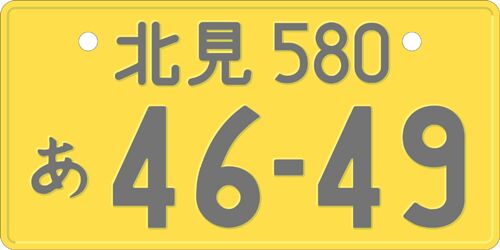Japan Restores Three Class System. For Cars

Japan has – as the confused reader of our monthly sales report from the Land of Nippon is woefully aware of – a two class car system. There are cars, and there are kei cars. Soon, there will be a three class system.
According to The Nikkei [sub], next year the Japanese government will introduce standards for “supercompacts.” Those are two-seat passenger cars, a class lower than minivehicles. Minivehicles, or kei cars, equipped with black-on-yellow tags, enjoy favorable tax and insurance treatment in Japan. They are limited by size and to a 0.66 liter engine.
The new “supercompact” two-seaters will not be allowed on highways. Because they aren’t, the thinking goes that they can be less crashworthy. Relaxed safety standards could lower their cost. Supposedly, there is “rising demand among people who drive only in the city and from older Japanese seeking an easy way to run neighborhood errands.”
According to The Nikkei, “domestic carmakers believe there is excellent potential demand for two-seaters. Not only do they appeal to elderly people looking for a convenient tool for running errands, but they also offer the benefit of lower carbon-dioxide emissions and can help ease traffic congestion in cities.”
They better check their ownership statistics.
The fortunes of minivehicles in Japan are fading. At one time, their combined share was 1/3 of Japan’s market. In the past years, they have not kept up with the market. What is particularly shocking is that minivehicles are predominantly a rural phenomenon in Japan. In rural areas with poor public transportation, over 90 percent of the households own a minivehicle. In cities like Tokyo, ownership drops to 10 percent. Here, you either own a real car, or none. As far as shopping goes: Even parking a bicycle turns into a problem.

Bertel Schmitt comes back to journalism after taking a 35 year break in advertising and marketing. He ran and owned advertising agencies in Duesseldorf, Germany, and New York City. Volkswagen A.G. was Bertel's most important corporate account. Schmitt's advertising and marketing career touched many corners of the industry with a special focus on automotive products and services. Since 2004, he lives in Japan and China with his wife <a href="http://www.tomokoandbertel.com"> Tomoko </a>. Bertel Schmitt is a founding board member of the <a href="http://www.offshoresuperseries.com"> Offshore Super Series </a>, an American offshore powerboat racing organization. He is co-owner of the racing team Typhoon.
More by Bertel Schmitt
Latest Car Reviews
Read moreLatest Product Reviews
Read moreRecent Comments
- Varezhka Maybe the volume was not big enough to really matter anyways, but losing a “passenger car” for a mostly “light truck” line-up should help Subaru with their CAFE numbers too.
- Varezhka For this category my car of choice would be the CX-50. But between the two cars listed I’d select the RAV4 over CR-V. I’ve always preferred NA over small turbos and for hybrids THS’ longer history shows in its refinement.
- AZFelix I would suggest a variation on the 'fcuk, marry, kill' game using 'track, buy, lease' with three similar automotive selections.
- Formula m For the gas versions I like the Honda CRV. Haven’t driven the hybrids yet.
- SCE to AUX All that lift makes for an easy rollover of your $70k truck.


































Comments
Join the conversation
Has this the same rules as European microcars? (two seater, 45kmph)